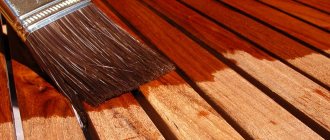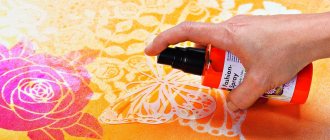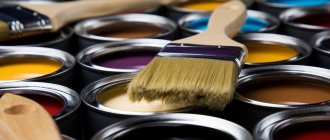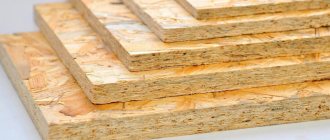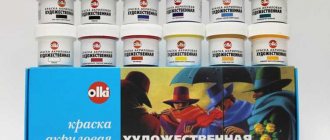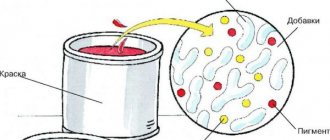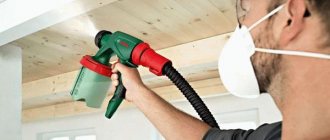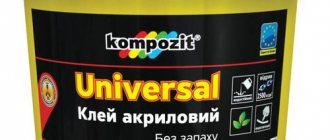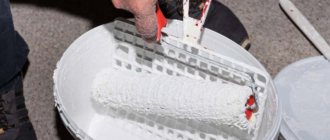Water-based varnishes: general information
Water-based varnish or aqualac is a popular paint and varnish material that is a worthy alternative to alcohol-based varnishes. This is an environmentally friendly material that has long won the love of ordinary people, especially those who care about their own health and prefer to surround themselves with environmentally safe things.
This decorative and finishing material consists of natural components, which means it is not characterized by toxic fumes or unpleasant odors, it is easy to use and protects wooden surfaces from destruction and damage for a long time.
Choosing color and shine
Another advantage of water-based varnishes is a large selection of color combinations and the possibility of coloring, which is difficult for other types of varnishes. Manufacturers of paint and varnish products offer a wide range of colors, which involve preserving the natural texture of the wood.
To select a color, it is convenient to use the catalogs of manufacturers of such products. The depth and saturation of shades can be changed by using different compositions and varying the number of layers.
You can get three types of coverage:
A matte surface is achieved with a small number of layers. To obtain a good gloss, you will have to work hard, applying layer after layer of varnish. With some effort and diligence, you can ultimately get a flawless, glass-smooth surface.
Composition of scuba tanks
The safety of water-based varnish is also indicated by its composition, because aqualak consists exclusively of water and natural emulsifiers (substances capable of creating an emulsion from immiscible components).
The emulsifier in such a varnish can be one of two substances:
- acrylic;
- polyurethane.
In addition to the main components, the composition may contain excipients:
- antiseptics (protecting wood from fungus and pests);
- liquid polymers;
- plasticizers (thanks to them, the varnish acquires the necessary strength);
- solvents (their share can range from 5 to 15%).
How does Aqualak differ from other varnishes?
Modern aqualak is a paint and varnish product made on the basis of water. It consists of approximately 15 percent solvent, and the remainder is aqueous. Since this varnish is water-based, it cannot be applied to every type of wood, so before you buy this or that water-based varnish in the store, you need to read the instructions to make sure that it is fully suitable for processing the existing wood.
Aqualak has significant differences from other paints and varnishes based on various components, for example, oils, resins or alcohol. Aqualak for wood has the following advantages:
- dries quickly enough;
- has no unpleasant odor;
- does not contain harmful or toxic ingredients;
- makes the surface of the wood breathable, that is, breathable;
- is a fireproof type of varnish;
- has excellent adhesion to the wood surface.
In addition, acrylic aqualac is very easily and simply diluted with ordinary water, it is very easy to apply, and this varnish effectively protects wood products from the appearance of fungi and mold. Another important advantage of this product is that aqualak has a relatively low cost.
This type of wood varnish has one drawback - the strength of the varnished coating is not very high. However, indoors there is no need to create a very durable protective layer, since the room does not have the negative effects of wind, frost, sun and temperature changes.
Classification of water-based varnishes
All scuba gear can be divided into two large groups:
- Single-component. They are called so because they contain only one active component - acrylic or polyurethane;
- Two-component. The name suggests that this paint and varnish material contains two polymers at once - acrylic and polyurethane.
One-component varnishes
- Acrylic varnishes
Most experts call these varnishes the most environmentally friendly among all paints and varnishes. Unlike many other varnishes, this material does not create a dense varnish film on the surface, and this circumstance allows the wood to “breathe”. It should be noted that the elasticity of acrylic varnishes is much higher than that of competitors. This feature makes applying varnish a simple task that even a non-professional can successfully handle.
At the same time, acrylic varnishes also have some disadvantages. First, they are not as durable as their polyurethane counterparts. And secondly, these materials are more suitable for covering surfaces inside a building, while when processing external surfaces they do not demonstrate their best qualities.
The disadvantages of acrylic varnish include the loss of its protective properties at temperatures below -25ºC. In such conditions, the varnish begins to crack, which means it will require restoration in the future. Acrylic varnish is also unstable to high humidity. In such an uncomfortable environment, it quickly becomes cloudy, bubbles may appear on it, but even worse, it begins to lag behind the base.
Experts agree that water-based varnishes with an acrylic base perform excellent indoors, but are completely unsuitable for finishing facades and outdoor use.
- Polyurethane varnishes
These are extremely durable paint coatings that are many times superior to their acrylic “brothers” in terms of reliability and ability to withstand external negative influences. It is not without reason that polyurethane varnishes are used to treat the internal and external surfaces of administrative buildings and structures.
These materials are able to withstand high mechanical loads and are resistant to damage. We can say that these varnishes are universal and have a wider range of applications than acrylic-based coatings.
Two-component varnishes
As mentioned above, two-component varnishes contain two active components at once. In this case, acrylic is considered the main one, and polyurethane is added to improve the performance characteristics of the material.
Practice shows that varnishes containing both components are the most reliable and wear-resistant, and therefore are used in intensively used premises. The surface, protected by a two-component material, has additional protection from chemical influences, the ingress of alcohol and other liquids, and also perfectly withstands increased operating loads (including impacts). Moreover, two-component varnishes are fire resistant, which means they can protect your home from fire! In addition, they do not have an unpleasant odor, which is also a plus when choosing a suitable material for protecting wood.
Pricing policy for protective coatings
For many people, the cost of a product is significant, and they focus on it. However, this is an erroneous approach, since the price is determined by many factors, including:
- number of purchased units of goods;
- view;
- compound;
- properties;
- manufacturers and other factors.
The average cost of acrylic scuba tanks is 400 rubles per 2.5 kilograms.
Application of protection
To ensure that the coating used does not spoil the appearance of the lining and protects it from the negative effects of the external environment, you must follow a few simple rules.
- To achieve uniform coverage, paint products must be thoroughly mixed.
- If the consistency becomes too thick, it can be diluted with water.
- The protective coating should be applied to the wooden surface in thin layers (usually 2 layers). To do this you will need a brush or soft roller. In this case, it is necessary to proceed to the next stage only after the first layer has completely dried.
In addition, acrylic scuba tanks are quite picky about temperature conditions. Therefore, they are not recommended for use in hot weather or at temperatures below 0 degrees. The technology for covering lining with paint and varnish products is presented in the video. Thus, wooden walls should be painted with a protective varnish. This especially needs to be done where the level of humidity is high (on the balcony, loggia, sauna, bathhouse and other similar rooms). This will create a barely visible shiny film on the surface of the lining, which will protect your interior for a long time and will not allow pathogenic microbes to enter your home.
Types of varnishes by texture
When choosing a varnish, maintaining the texture of the wood treated with a protective layer is of great importance. In this regard, scuba tanks can be divided into 3 types:
— Glossy varnish. This is a classic version of varnish coating that creates an absolutely transparent shiny film on the surface. In addition to its pronounced shine, the varnish layer is extremely durable and abrasion-resistant. By the way, in addition to transparent glossy varnish, you can find on sale material with shades, for example, gold or silver.
- Matt lacquer. To achieve a noble matte surface, manufacturers mix urethane and alkyd resins. As a result, after application, an opaque thin film is formed on the surface, no less reliable than a glossy varnish, but more seasoned and noble.
— Semi-matte varnish. Semi-matte material is extremely popular among acrylic varnishes. Perfectly highlighting the structure of the wood, this varnish creates a chic, unobtrusive shine.
Important! It should be noted that semi-matte varnish can only be applied to perfectly polished surfaces, because even the smallest imperfections under a layer of semi-matte varnish will be clearly visible.
Varnishes and their types
To give wooden surfaces a new style and improved appearance, various varnishes are used.
- You need to be careful with such consistencies, because sometimes, when using them, you can get poisoned, and seriously;
- Each type of varnish has its own areas of application - aluminum lining is generally painted only in production.
Epoxy
The most dangerous varnishes are of this type. The fact is that epoxy varnishes have a strong odor and contain a hardener. When using such varnish, you need to be extremely careful not to get poisoned.
Tikkurila products
Note! Under no circumstances should this varnish be used indoors or in buildings, only for exterior decoration.
Polyurethane
These formulations are the most common among consumers. They can be used on any wooden surface, in any type of room.
- The difference between such varnishes and others is that with them you will need to spend more time processing the surfaces, because they dry more slowly than their analogues;
Polyurethane composition
- Having painted the surface once, you must wait at least two hours, or even four, to begin applying the next layer;
- As a final result, after treating the material with such varnish, you will get a hard, and, among other things, elastic surface.
Acrylic and water-based
The safest types of varnishes. They contain solvents in an amount of 15% by weight, the rest is just water. It is for this reason that you do not have to worry about your health when using these types of varnish. These varnishes dry very quickly, which is another advantage of these types of varnish.
Member of the acrylic family
But it should be noted that such emulsions also have disadvantages, namely, due to their composition, they cannot be applied to some types of wood, so before using such a coating, you need to find out everything about it. Instructions are included with each varnish; study it carefully and find out the scope of application of a particular type of varnish.
Increasing wear resistance by applying varnish to the surface
Advantages of water-based varnishes
Aqualacs successfully compete with alcohol-based paints and varnishes due to a number of advantages. In this regard, the main advantages of this material include:
- Environmentally friendly. The natural base of Aqualak is a key advantage that other paints and varnishes cannot boast of. During the process of application and drying, this material does not form toxic fumes, which means you and your household will be completely safe, both during all finishing work and during operation.
- Economical. Based on the ratio of price and consumption per 1 sq.m. surface, this material outperforms many competitors, which attracts increased attention from buyers.
- Fast drying. Water-based varnishes dry quite quickly (no more than 5 hours until completely dry). Moreover, some types of varnish dry in literally 2-3 hours. This feature allows you to significantly save time during repairs, and this is another important advantage.
- Fire resistance. Most paint and varnish coatings are fire hazardous because they consist of alcohols and resins. But this material, which is 85% water, is not subject to combustion and behaves well even near stoves and portable heating devices. Moreover, this varnish can be used as a protective material in areas with a high fire hazard.
- Durability. Practice shows that scuba tanks are 1.5 times more durable than alcohol-based paints and varnishes. And this fact, taking into account the affordable price of such material, makes water-based varnishes extremely attractive in the eyes of the buyer.
- Reliable protection. Any varnish covers the wooden surface with a protective film. However, even a scuba film provides the most reliable protection. The fact is that the surface tension of this film is not too strong, and therefore it is less prone to cracking and better withstands mechanical pressure and shock.
- High adhesion. Thanks to the high level of adhesion, this material reliably adheres to the working surface and stays on it for many years without coming off, cracking, or chipping.
- Antiseptic properties. Water-based acrylic varnish has the ability to resist fungus, bacteria and pests that can damage wood. In this regard, acrylic varnish can be used to treat surfaces located in rooms with high humidity (kitchen, bathroom). But it is better to avoid treating façade parts with acrylic varnish.
- UV resistance. Water-based varnishes withstand exposure to sunlight very well. Even after prolonged exposure to the sun, they do not fade, become cloudy or crack.
Disadvantages of water-based varnishes
- The need to comply with technological conditions. It should be noted that aqualak is a capricious material, the operation of which requires compliance with a number of conditions. In particular, in the room where this material is used it is necessary to maintain the temperature within the range from -15ºC to + 20ºC. And the humidity level should not go beyond the range of 55-60%. If these conditions are not met, the durability of the water-based varnish will be noticeably reduced, it will quickly begin to become cloudy, and the wood underneath will darken.
- The need to humidify the air during the application of varnish. To obtain the most durable surface film, water-soluble varnish should be applied at an air humidity of around 50%. To achieve this indicator, the air in the room will have to be regularly humidified using a sprayer.
- The need to apply several layers. To ensure high-quality protection of the wooden surface, water-based varnish should be applied in several layers.
Assessing the pros and cons of this material, many ordinary people agree that the advantages of aqualak many times exceed the disadvantages of this material. Thus, if you have to varnish a small area, and especially inside the house, water-based varnish should be the material of choice.
Areas of use
Almost any water-based aqualac for wood can be used for both external and internal work. One of the main conditions is a small percentage of wood moisture at the time of applying varnish. Due to minimal humidity, Aqualak will penetrate much deeper into the wood structure and nourish it. If the humidity of the wood is high, streaks and stains may appear, as a result of which the varnish is poorly absorbed.
When the applied protective layer dries, the wood will have a thin, but very durable, and at the same time elastic film. It will make the wood water-repellent, but at the same time vapor-permeable.
The wood to which Aqualak will be applied should not be in constant contact with water, but this type of varnish is not afraid of cleaning with a damp cloth. In addition, you can safely wash the wood with water, detergent solutions and soapy liquids. Since water-based aqualac does not have an unpleasant odor, it can be used in rooms where there is not sufficient quality ventilation. The ideal place for this varnish is to be applied to interior surfaces and products.
Nowadays acrylic types of scuba gear are produced that have protection against exposure to ultraviolet rays. They are used for application to the facades of houses with wooden cladding, and this varnish is also used to create a protective coating for benches, gazebos, and other wooden products. In addition, they produce specially designed aqualak for lining.
Scope of application of water-soluble varnishes
Depending on the varieties, and therefore the presence of certain properties, the scope of use of scuba tanks may differ significantly.
— Water-based acrylic varnishes are not the most suitable choice for flooring, and this is why this material does not tolerate increased loads. If you choose them as a floor covering, then only for non-traversable rooms in which many people do not gather.
— For a small room in which minimal load will be placed on the floor, it is enough to purchase a one-component varnish. In addition, it is sold ready-made and does not require additional components.
— If you have to apply a coating to a large living room floor, pay attention to a two-component varnish. Remember that before use, the main component must be combined with a hardener, thoroughly mix the resulting mixture, and only then begin work. In addition, depending on the level of humidity in the room, various antibacterial components and surface-strengthening plasticizers can be added to the varnish.
Important! If you need to cover wooden parquet made of larch or pine, you should opt for a two-component varnish.
— One-component acrylic varnishes are not intended for covering outdoor surfaces. If you decide to ignore this rule, be prepared for the fact that under the influence of scorching sun and wind, fog and snow, this coating will last no more than 1 year.
— Bearing in mind the environmental friendliness of water-soluble varnish, that during application and during operation it does not emit formaldehyde and other dangerous toxins, you can safely treat floors, ceilings and walls in a bedroom or children’s room with this varnish.
— In addition, acrylic varnish is often chosen by masters of decorative and applied arts for their works. This material is often used to cover decorative elements in the interior.
— Polyurethane varnish is stronger and more wear-resistant, and therefore it is used for treating floors or walls in administrative buildings, trade pavilions and educational institutions.
— Finally, when choosing a varnish for the floor, walls or window frames, remember that such a coating should highlight the advantages of the main surface. In this regard, in a poorly lit room where sunlight rarely reaches, glossy varnish looks better. But in a bright and sunny room, matte and semi-matte varnish looks exceptionally noble.
Composition of protective coatings
When choosing scuba tanks to protect wooden lining, you need to pay attention to their composition. They contain:
- variances;
- microwaxes;
- antiseptic additives;
- modifiers;
- water.
House painting
However, since their composition is dominated by water, these products must be used with caution when working with wood species such as beech, hornbeam and other exotic plants.
Where to use water-based varnish
We list the surfaces and products that are most often treated with water-based varnishes.
- wooden surfaces of the facade of a house or bathhouse, gazebos and other buildings (except acrylic varnish);
- walls, ceilings indoors;
- parquet, laminate or deck board floors;
- wooden stairs and window frames;
- brick, panel, glass, metal and plastic surfaces, plaster and even wallpaper;
- wooden toys and wooden children's accessories.
Features of application
The material can be used for both internal and external work. The main thing is that the humidity is minimal directly during the application of the coating, so the varnish will penetrate more evenly into the pores of the wood and “nourish” it. With high humidity, stains and smudges may form on the surface; the composition is poorly absorbed into damp wood.
After the coating dries, a durable, thin elastic film is formed on the wood, which ensures the water-repellent properties of the surface, but at the same time maintains its vapor permeability, i.e. the tree “breathes”.
It is better to avoid constant contact with water for wooden products treated with aqualac, but they are not afraid of wet cleaning. You can safely wash the surface with water, soap solutions with added detergents. The absence of a characteristic “varnish” smell allows the use of water-based products in rooms where it is difficult to organize high-quality ventilation. This is an ideal option for interior finishing work.
Some types of water-based varnishes, resistant to ultraviolet radiation, are used to cover the facades of buildings with wooden cladding, and to treat garden gazebos and benches. There is also a special aqualak for lining.
To treat a wooden floor, it is better to find another type of coating; aqualacs are subject to rapid abrasion, and therefore are not suitable for wood under intensive use. Although some manufacturers (for example, Tikkurila) produce water-based varnishes for covering floorboards and wooden parquet. But there are limitations here too; such coatings cannot be used in operating conditions at low temperatures.
How to apply water-soluble varnish
Working with aqualak is not the most technically complex process, but it has a number of features that you need to know before applying this paint coating. So:
1. Before you start applying varnish to a wooden surface, it must be prepared. Using fine sandpaper, it is important to remove the previous coating, be it paint or varnish. If you have to work with freshly laid parquet or laminate, you can simply remove surface dirt and wipe the floor with a damp cloth.
If there are defects on the wooden surface (cracks, gouges, dents), they must be puttied and also treated with sandpaper. After waiting for the surface to dry completely, you can move on to the next stage.
2. Before applying varnish, the surface must be treated with a primer. Ideally, the primer mixture should have a base similar to varnish (a wood primer is suitable for aqualac applied to wood). Naturally, both protective materials must be water-based.
3. The primer mixture needs to dry thoroughly, for which you need to wait a day. After the allotted time, you need to walk over the dried surface with fine sandpaper and remove dust with a vacuum cleaner.
Important! Ideally, 2-3 layers of primer should be applied to the wall. This will not only strengthen the wall, but will also reduce varnish consumption.
4. Prepare the necessary tools to coat the surface with varnish. You will need the aqualak itself, a roller and a container in which it is convenient to wet the working tool.
Important! Water-soluble varnishes cannot be applied with brushes. To work with such material, you should use a roller, and if the surfaces are too large, a spray gun. The brush leaves large stains that will be visible to the naked eye. Therefore, even in hard-to-reach places it is better to use rollers of appropriate size.
5. Fill the tray with varnish, and if necessary, mix the ingredients and mix them thoroughly. After moistening the roller in the finished varnish, begin to roll it over the wall.
Important! Please note that the varnish is applied along the wall and leveled across. The movements should be soft and smooth, and the wall should be varnished without gaps.
6. After allowing the first layer to dry, which is approximately 3-4 hours, you can apply the second. According to experts, a reliable varnish coating requires the application of 3-5 layers.
7. After applying the surface coating, leave it for a week until completely dry. And after that, you can arrange furniture in the room without fear of scratching the varnished floor.
We study paint and varnish products with the prefix “AQUA”
Despite some restrictions in the use of water-based coatings, it is very popular among buyers:
- Aquaprimers;
- Scuba diving;
- Aqua paints;
The operating principle of the protective mechanism of these compounds is presented in the video.
Currently, there are many protective and decorative aqua coatings that allow you to obtain a high-quality finish for valuable types of wood, giving the material the desired colors and shades. At the same time, the compositions do not paint over the natural grain of the wood. The photo shows the color range of the scuba tank from the manufacturer
Color Chart
A fairly quick and economical way to protect the lining from aging and external influences is to use scuba tanks. They have a number of significant advantages over other types of coatings.
First of all, the absence of odor and organic solvents. You can work with scuba gear in enclosed spaces without causing inconvenience to others. The textured coating protects the wood from biological damage and colors the surface to resemble valuable wood species.
Applying varnish to a wooden surface
Popular manufacturers
The market for paint and varnish coatings is replete with the names of companies, each of which is ready to offer its own unique product. We chose the most popular manufacturers, according to buyers.
- Tikkurila
These are branded products that have long earned the love of customers due to their consistent quality and durability. Tikkurila is especially famous for its acrylic water-soluble varnishes. They are ideal for interior decoration, especially rooms that rarely receive sunlight. With prolonged exposure to ultraviolet radiation, this coating begins to deteriorate. And its consumption per 12 sq.m. is 1 liter.
- Eurotex
Among domestic manufacturers of paint and varnish products, this company is a leader, and all thanks to its versatility, ability to retain moisture, resistance to chemical attack and affordable price. In addition, 1 liter of varnish can cover 17 sq.m. surfaces. One has only to take into account that such a coating is not applied to old layers.
- 3V3
The French company is famous for its finishing coatings, but the two-component varnishes of this company received special love from customers, because such products have the highest strength and allow you to easily rearrange furniture or hold parties in the house without fear of damaging the varnished floor. The varnishes of this company are odorless, and their service life exceeds 7 years!
- Aqua Parade
This varnish is produced in our country, but from imported components. It boasts a wide range of materials and their excellent properties. Suffice it to say that the scuba tanks of this company are easy to wash, do not allow water to pass through and do not deteriorate under its influence. In addition, Aqua Parade paints are leaders in drying speed. It takes no more than 30 minutes for the layer to dry completely! The disadvantages of this product include only the consumption of 1 liter per 10 sq.m., and the high price for a domestic product.
Varnishing wooden surfaces is a common practice. And to ensure that your efforts are pleasing to the eye even after 5 years, use our advice and choose for yourself only the best water-soluble varnish!
